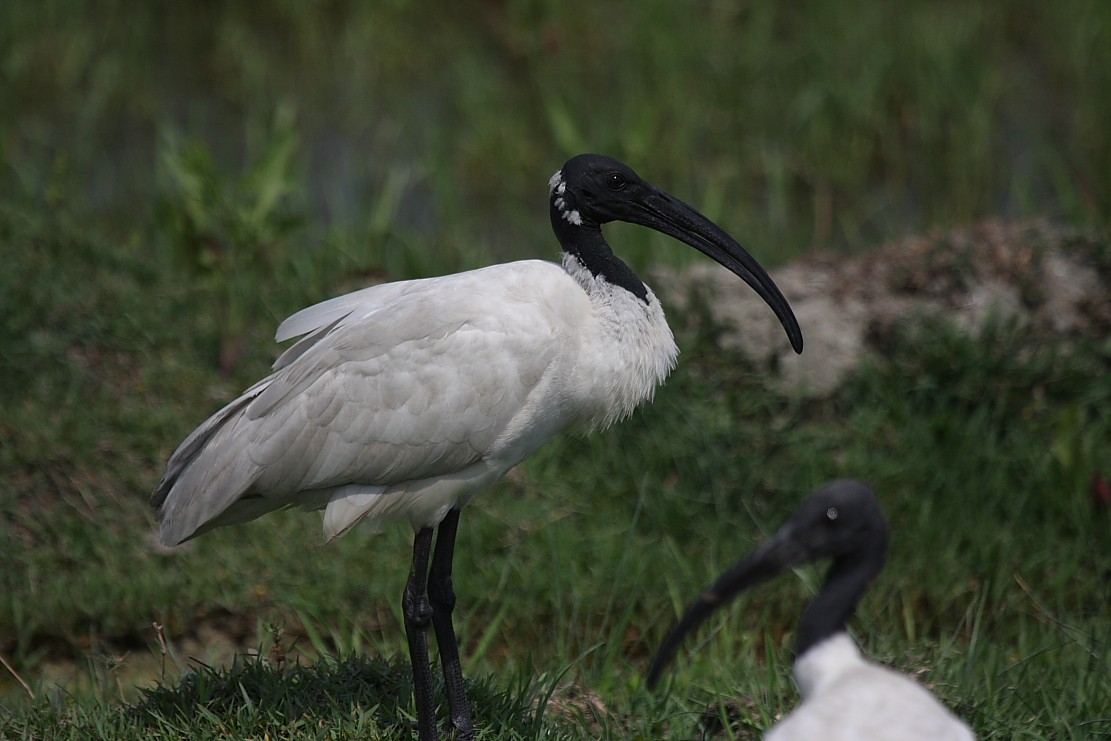Black-headed Ibis
A species of Sacred Ibises and Allies Scientific name : Threskiornis melanocephalus Genus : Sacred Ibises and Allies
Black-headed Ibis, A species of Sacred Ibises and Allies
Botanical name: Threskiornis melanocephalus
Genus: Sacred Ibises and Allies
Content
Description General Info
 Photo By Gopi Sundar K S , used under CC-BY-SA-4.0 /Cropped and compressed from original
Photo By Gopi Sundar K S , used under CC-BY-SA-4.0 /Cropped and compressed from original Description
The black-headed ibis is one of several large waterbird species in south and south-east Asia, with adults measuring 65–76 cm in length. The white plumage is starkly contrasted against a conspicuous naked black neck and head, and black down-curved beak. Tails of adults bear light grey ornamental feathers that turn jet black during the breeding season. During the breeding season, bare patches under the wing turn blood-red. The head of some breeding adults gain a blueish tinge, or very rarely have a pink or bright red patch behind the neck. Some breeding adults also develop tufts of white feathers behind the neck, and rarely also get a yellowish colouration on the breast and back. Sexes are identical but juveniles are identifiable from adults in having greyish feathering on the neck and speckled brown-grey feathering on the wings and back. Like storks and spoonbills, it lacks a true voice-producing mechanism and is silent except for ventriloquistic grunts uttered by pairs at the nest. 
Size
76 cm
Colors
Black
White
Life Expectancy
28 years
Nest Placement
Tree
Feeding Habits
Black-headed Ibis consumes a varied diet of insects, fish, and frogs, often foraging in wetlands. They may exhibit specialized feeding techniques adaptable to water-based ecosystems.
Habitat
The habitat of black-headed Ibis is diverse, primarily comprising wetlands such as marshes, swamps, and areas around rivers and lakes. They thrive across agricultural fields, especially paddy fields, and in wet grasslands. Additionally, black-headed Ibis have adapted to coastal zones like intertidal mudflats and mangroves, displaying versatility in both natural and human-modified environments from freshwater to saline ecosystems and occasionally urban regions.
Dite type
Omnivorous
General Info
Feeding Habits
Bird food type
Distribution Area
Black-headed ibis are native to the following countries: Bangladesh, Cambodia, China, Hong Kong, India, Indonesia, Malaysia, Myanmar, Nepal, Pakistan, Philippines, Russian Federation, Sri Lanka, Thailand and Vietnam. They are migratory or vagrant in Japan, Republic of Korea, Lao People's Democratic Republic and Mongolia. The species is a widespread breeding bird in India, Sri Lanka, Nepal and Myanmar, and has declined considerably to few locations or breeding colonies in Cambodia, Indonesia, Malaysia, Thailand, and Vietnam. The most rapid decline in recent times is suspected to be the population in Sumatra. The black-headed ibis is very versatile being able to use a large variety of natural and man-made habitats. These include freshwater and salt-water marshes, lakes and ponds, as also rice fields, freshly ploughed crop fields, irrigation canals, riversides, reservoirs, urban lakes, open sewage gutters, grazing lots, and garbage dumping sites. Ibis alter use of varied preferred foraging habitats by season in agricultural landscapes such as in south-western Uttar Pradesh in India. In summer, they largely use and prefer natural marshes and fallow fields, but in the monsoon, spread out more evenly to also use a variety of agricultural fields. In landscapes that have more forests and rocky hills as in southern Rajasthan, wetlands are the preferred habitats year-round. Open sewage lines are used more during the dry summers, and ibis increase the use of grazing lands during the monsoon. It nests in heronry colonies near wetlands. It builds a platform nest of sticks, lined with grass and threads. 
Species Status
Not globally threatened.
Scientific Classification
Phylum
Chordates Class
Birds Order
Pelicans and Relatives Family
Ibises and spoonbills Genus
Sacred Ibises and Allies Species
Black-headed Ibis